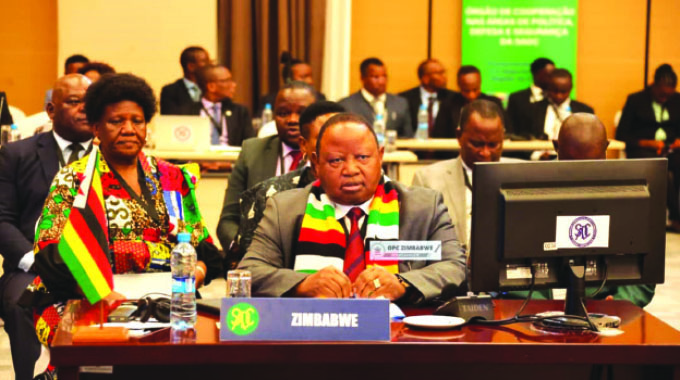Pilot shares near death experiences in cockpit

Walter Nyamukondiwa
Mashonaland West Bureau Chief
The journey to becoming a pilot hit turbulence for Captain Clifton Geza as he struggled with funding, faced racial and emotional harassment before even scaling the higher altitude he so cherished.
When he finally managed to be a pilot, real turbulence at altitudes of more than 8 000 feet above the ground were a lived experience that he has now become used to.
Things have largely been exciting in the cockpit, but Capt Geza has also faced challenging situations that tested him to the limit.
In one incident, Capt Geza made an emergency landing in a field in Gokwe during a cross-country training tour after discovering that the aircraft was losing fuel owing to a faulty tank cap.
He was flying at an altitude of around 8 000 feet when the incident occurred.
“We were flying on a cross country during training on a Trainer Cessna Reims Rocket 175 single-engine piston variable pitch prop aircraft. It had a problem as one of the fuel caps was siphoning fuel,” recounted Capt Geza.
“It was after Hwange, maybe around Gokwe. I recall that there was Sengwa nearby. I had to land in one of the fields because it was siphoning fuel.”
Running out of fuel on the road is a slight inconvenience as you only need to go to the nearest service station with a jerrycan. But what happens when a plane runs out of fuel mid-air?
It is one of those incidents where one automatically remembers there are superior powers for divine intervention.
“While fear kicks in, as a pilot there are procedures that you need to follow according to the training manual,” he said.
The “Mayday” distress signal was made to the Air Traffic Controller (ATC) at the control tower.
“I remember the aircraft was losing fuel rapidly at that point. As part of procedures I had to exhaust the fuel before attempting to land,” recounted Capt Geza.
Attempting to land when there was fuel could have caused an explosion, he said.
At training, he said, they learnt the five forced landing procedures.
This meant looking for a suitable landing field without powerlines and announce an emergency.
“I safely landed in the field I chose after getting clearance from the Control Tower.
“Within a short space of time, a search and rescue team from Suri Suri Airbase in Chegutu had arrived,” narrated Capt Geza.
After landing, the aircraft would have to be stripped and carried away to be reassembled after an assessment.
Rarely do we manage to peep into what goes on in the cockpit, but a lot happens when one tries to navigate an aircraft through unpredictable weather.
Sometimes aircraft, like all machines, malfunction, but the implications of such a misfortune are too ghastly to contemplate.
In another incident, Capt Geza had to land a plane during a thunderstorm that caused zero visibility in Mozambique.
“One other incident I remember vividly was when we came across a thunderstorm on a trip to Mozambique,” he said.
The thunderstorm extended for several kilometres, causing turbulence and affecting visibility.
He could not ascend above it as well as it was too high so he had go round the storm.
However, visibility remained very low and the cabin equipment had been affected by static electricity and did not respond at some stage.
He had to rely on the
“I indicated to the ATC that I could land. It was terrible to the extent you could feel static electricity and the radios and instruments stopped functioning.
The weather changed from what the forecasters had given us,” said Capt Geza.
Passengers were now screaming and they had to calm them.
He had to go back to the basics which meant he was to keep flying and maintain wing levels.
Capt Geza had to rely on the Automatic Directional Finder (ADF) which kept pointing at the thunderstorm.
His task was steer the aircraft away from the thunderstorm.
The ADF remains functional even in a severe thunderstorm and it is designed to remain operational when everything else ceases.
He managed to safely land the aircraft, even when visibility had been reduced to a bare minimum.
Captain Geza started his journey soon after completing his A’ Level around 2000.
He went to South Africa where he did part of his training and worked Nature Ways before coming back home.
He worked briefly for Air Zimbabwe before joining Falcon Air, a chartered plane operator.
In South Africa he was subjected to racial abuse but took it in his strides.
“It strengthened and toughened me in a way,” he said.
The journey to be a fully fledged pilot was not easy as he struggled to raise the required amounts.
By stroke of luck he managed to have an arrangement with Loutzavia where he would undertake the training, with the costs being while he worked for Nature Link.
“That made life easier because I had approached my father to pay the required amounts but his coffers had been exposed in the initial stages,” said Capt Geza.
He got his Command and therefore qualified as a Captain in 2020.
In his journey as a pilot, Capt Geza has fallen in love with the Cessna 182 single engined piston variable pitch prop aircraft and the Caravan 2 F406 Multi Engine Turbine or prop jet.
“I like them for their speed or in general their performance,” he said.
“I also like the fact they pose a challenge on the flying part as they call for precision with regards to all handling but with a good safety record.”







Comments